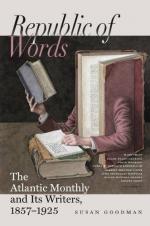The distinction between the true and the false portraitist is that between expression of something felt and representation of something seen; and as the subtilest and noblest part of the human soul can only be felt, as the signs of it in the face can be recognized and translated only by sympathy, so no mere painter can ever succeed in expressing in its fulness the character of any great man. The lines in which holiest passion, subtilest thought, divinest activity have recorded in the face their existence and presence, are hieroglyphs unintelligible to one who has not kindled with that passion, been rapt in that thought, or swept away in sympathy with that activity; he may follow the lines, but must certainly miss their meaning. A successful portrait implies an equality, in some sense, between the artist and his original. The greatest of artists fail most completely in painting people with whom they have no sympathy, and only the mechanical painter succeeds alike with all,—the fair average of his works being a general levelling of his subjects; the great successes of the genuine artist being as surely offset (if one success can find offset in a thousand failures) by as absolute and extreme failure.
As regards portraiture in general, the public may, without injury to Art or history, employ the painters who make the prettiest pictures of them; it doesn’t matter to the future, if Mr. Jenkins, or even the Hon. Mr. Twaddle, has employed the promising Mr. Mahlstock to perpetuate him with a hundred transitory and borrowed graces,—if the talented young litterateur, Mr. Simeah, has been found by his limner to resemble Lord Byron amazingly, and has in consequence consented to sit for a half-length, to be done a la Corsair, etc., etc.; but for our men of thought, for those whose works will stand to all time as the signals pointing out the road a nation followed, whose presence and acts shall be our intellectual history,—it




